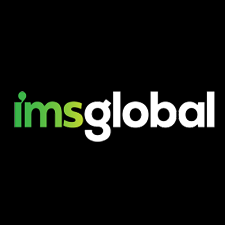
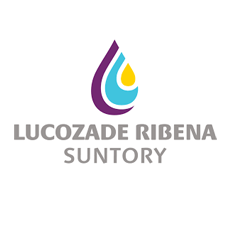
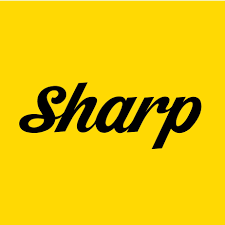
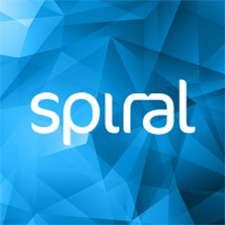
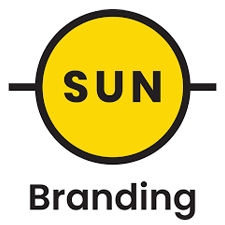
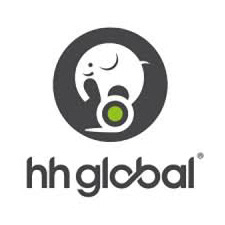
Studio Managment
Design & Artwork Management (agile working) - Spiral Communications
Working as the Artwork & Design Manager for a small team of Seniors, reporting directly to the Creative Director for a group of large global clients, my responsibility was input to studio and the output to client. Communicating directly with the client to receive and discuss forecasts, current projects and next steps in current projects. I would brief the studio and generally produce the work myself as we ran a minimum staff model and called on freelancers to help complete larger projects, to which I was also responsible for organising, managing and signing off costs.
With running a minimum staff model, working for large scale global accounts for internal and external comms I would be required to dip into all my skillsets, some jobs required design, artwork, some audio production, copywriting, proofreading and some jobs we’re solely animation. I would always produce myself unless the studio was to capacity and we had no choice to call on freelance, but the agile way of working allowed us to keep overheads down and improve profits on projects. Agile running in this way required quick thinking and ability to solve issues in a creative way as we were not always set up to create work in quick turn arounds, due to the business model. But solutions always presented themselves after weekly production stands or daily if required. Communication and a group of very experienced seniors, willing to work on anything required of them allowed us to thrive, a business running for 30 years, I do believe agile working with the right people is a sure-fire way to improve profitability. If there was something we were stuck on creating - it would be straight to learning on the job.
An example management project is a Lloyds Banking Group Full Yearly Mailer, consisting of 5 to 6 tranches with anything up to 20 brochure, letters, and digital items per tranche, managed by various stakeholders, each with different issues and timelines. The main issue was timing, we would always provide a schedule to the client to work to, this allowed us to book work into studio in advance and gave the client a certain number of days to feedback, which would then slot into studio for production. But obviously, as the way with many clients, they could not keep up with their schedules that they agreed with, so this required twice daily production analysis to ensure we had the capacity to work on delayed work, as well of booked in work. This usually transpired as pulling stakeholders together to discuss priorities which gave me time to work on the items myself, checking artwork and brand on other staffs work whilst negotiation with clients and collating available freelancers to start the next day in the background. Tight timelines and on the edge of your seat planning. Fun times.
Production management of Client services - Sharp Agency
Responsible for creative input and output. The majority of work at Sharp was advertising, we had 3 designers, and 2 copy writers. Reporting to the 2 Creative Directors/owners, my daily activates included heading daily production meetings where current work for that day was discussed including problems that may lead us deviate from the client or internal production deadlines. Meetings in the PM were with the client management team book and brief work in for discussion in the mornings production meetings. All meetings we’re quick efficient and to the point. Standups also served as a call to arms for any issues in resource where I needed to reach out to freelancers and book the appropriate talent for the job at hand, this could include, designers, art directors, illustrators, 3D specialists, vocal performers and copy writers. This could also include the use of an external agency where appropriate. All aligned to budget and timelines.
Also, As part of keeping up with industry, 1 person per week picked a trending topic to make a presentation based on how it can influence either the business or the industry, These we’re great session that helped sharpen peoples skills and kept the agency on point.
One challenging project was a London Underground takeover ATL marketing campaign for a new MMO mobile phone strategy game. This was a tight turnaround project and involved lots of moving parts and elements to advertise the game in one section of the London Underground. The Walls were backed with fighting characters in a fantasy scene, that we booked a CGI team to produce at a very large render size. The floor was done as a chess board design where commuters could engage with by passing by. This project involved many people from Designer’s, Project Managers, Copywriters, Artworkers, CGI Specialists and graphic illustrators, which all worked on the project at specific times and budget levels. This was a fast paced but fun project that testing the entire studio.
Business Improvement
IMS Global’s artwork/design team was spread across the UK and other global offices, Australia, Singapore, India and China. My time there as a Brand Guardian/Manager was met with various obstacles in getting work out on time and 100% accurate. Our main production force and artwork rollout team (to which I was managing in my silo) was outsourced to India and the master artwork/design templates were done in the main offices along with Brand Management and Quality Control. The issues came from each office having different peak levels of productivity and no way to cross communicate and work on projects in a global fashion using all available resources at any one time. To improve this and the business model I spearheaded a Business Global Alignment strategy which I presented to the board of directors.
This included but was not limited to having each site provide their current briefing templates and production workflows to our main office. These we’re reviewed and trimmed down to a more aligned workflow, using ‘Esko’ prepress software where possible (to which we all had access) and included drafting English Creative Briefing Templates that were simple but effective and all countries could read and understand them well and were to purpose for all their clients. The end goal being that at any time, any studio could outsource to another studio, easily transfer files, send files for processing and take briefs, which ultimately reduced outsourcing costs and improved workflow and SLA/KPI agreements.
An interesting Project was for Reprographics/Artwork Automation at Sun Branding Solutions. Working with the business improvement manager we set about holding a GEMBA KIAZEN to create, test, break, create, test succeed for a cost/time saving project at a high level to automate as many processes as possible to save the reproductive operator time and reduce error rates. This involved being locked into a room for a week creating and testing hypotheses, finding all possible ways of why it wouldn’t work and re-addressing the straggly to take these into account until the best process and software mix was created and deployed.
Another example of business improvement at Sun Branding Solutions where I worked as a Lead Brand Guardian/Manager in Packaging graphics also, this involved creating a handover document and QC, supply checklist for all internal and external Design Agencies that enabled the Artwork/Reproduction studio to use and work with design files at import stage having some tasks completed at that previous stage to speed up production, i.e colour profiling, overprinting, font supply and Fogra Proofs printed. This involved various meetings and cost/time analysis to provide a completed form to be supplied to agencies and returned to us completed. The benefit to the agency being, no returns for non-purpose design/artwork files
Project Management
Development of secure Interactive iGuide document/website - HHGlobal
Lloyds Bank came to us with a design creation project that wanted two opposing elements, at the time, not readily available. They were aware they could have a website but didn’t want the outlay of hosting along the issue with security it posed. After chairing meetings with the client along with the Sales Director we decided to manage expectations about current technologies but suggested we go away and try to find a solution that worked on both fronts with a pre-agreed cost to include research and delivery.
The minimum expectation was set to deliver a knockout engaging design but the interactivity and animation would be dictated by the research and development. Using the current production team, which consisted of Artworkers, Designers and a Web Developer we set about brainstorming ideas using current software (ADOBE). We were aware the Interactivity could be built into the Indesign file, which also covered off the security using the encrypted PDF format. Which left us with trying to figure out how to add animations and more complex interactivity like hover-overs and dynamic fold out menus.
We held weekly ongoing meetings to discuss progress. This included reports on costs and time tracking, internally for our studio and externally for the client to track costs and deadlines. My other role was to manage time within the studio to run to budget and time.
During the design stage I spent a lot of time with the web developer going through options that allowed us to use SVG animations built inside AfterFX which offered us the option to create small files that could be inserted. The final hurdle was finding how to export the SVGs into a platform that allowed us to build menu systems and export PDF’s.
The solution came to light by rebuilding the designs into Adobe Illustrator (which I did myself due to training issues within the artwork team) which could then be imported into AfterFX to animate. The platform that we bent to our will was Adobe Acrobat reader. We had to embed Flash to allow menus and animations to work in a web type fashion, by using code. The end result was a sub 3mb PDF, that was encrypted and could be used as an interactive website without the need for hosting or the device needing to be online. Needless to say, the client was very happy.
Key takeaway - Under Promise, Over Deliver.
Resource Management
Lucazade RIbena Suntory - Remote interpersonal Management of resource
Remote management of studio resources between Internal and external stakeholders. A fast paced, heavy communicative role which required a fair amount of firefighting between heads of various departments in regard to priorities and due dates. Working with an internal agency whose remit spread between internal/external comms, packaging, branding, digital, animation and social. A steady head was required to calm and support a majority junior team with the sheer influx of different types of work, all with short deadlines. All my time outside meetings with stakeholders, demanding work or demanding reports, was helping studio with problems, technical questions and getting stuck into some creative work myself to release some resource for more important time-consuming work.
A calm and authoritative voice was often required when having to say no to stakeholders requests, who were themselves, quite stressed and receiving pressure from their heads. I would never say no in the first instance and would always go away to see what could be moved around and have discussions with other stakeholders I knew did not require booked in work as urgently. There was usually a solution, even if that required me to do the work myself. People are always grateful when you try your best, rather than just saying no, this in turn comes back in your favour when you require them to shift their stance to help you.
Brand Management,
Throughout most roles, brand management has been a part of my day-to-day activities in varying amounts. At Sun Branding Solutions my main responsibility was ensuring Brand integrity was managed throughout our internal team and external outsource agency in Mumbai. This came in the form of various technical training meetings, brand guideline management, meetings with printers and clients to ensure Brand adherence was possible for the chosen output. I created Artwork/Design masters to be approved by the client and then rolled out to the external team, which was then returned to me to QC/QA to ensure all aspects of Brand were correct and all were correct to brief. On the client side, I held PPMs (Pre-Production Meetings) with the stakeholders, printers and design team (if a different supplier). The meetings were put in place to capture any issues that could arise later in the project, mainly in relation to colour reproduction and print quality. PDM (Pre-Design Meetings) were sometimes held when the client wished our input on the design feasibility on various stock including tactile vanishes and emboss/deboss.
I had a team of Client Executives that worked with me, contacting the client for briefs, and raising issues that appeared whilst the artwork was underway, for example, confusion instructions or instructions that would not be possible to accomplish within the printer specification. This sometimes required me to get involved to fix the issue by jumping onto the job and working around the problem or colour retouching to remove certain colours, increase minimum dot issues and reduce max TAC (ink coverage) values. Which the external team were not trained to do at a higher level.
